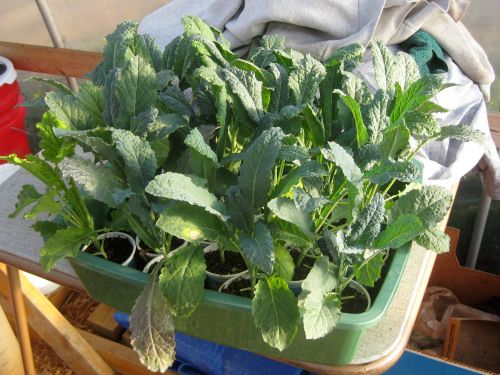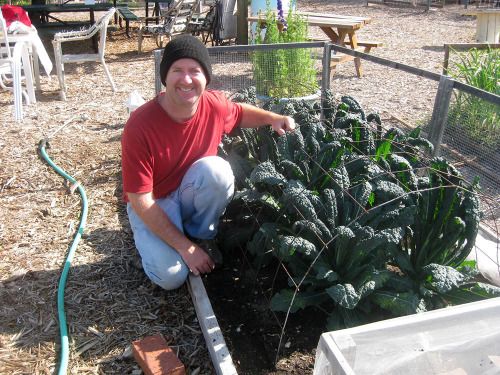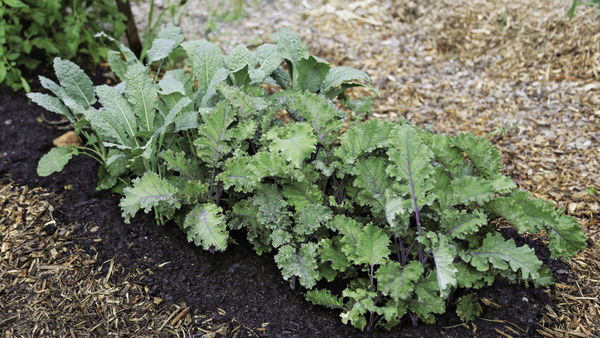
Each year I grow something new in my veggie garden, in addition to new varieties of crops I’ve grown before. This year, kale was at the top of the list. Not just any kale. The most unique and visually stunning kale I know of—”dinosaur” kale. It is also known as Tuscan kale, Tuscan cabbage, Italian kale, black kale, palm tree kale, et al. The moniker dinosaur kale refers to this variety, because the bumpy surface of its leaves is said to resemble dinosaur skin. Like other kale varieties, dinosaur kale is extremely nutritious, by having more than 100 percent of the daily value of vitamins K and A.
Growing Dinosaur Kale
I started the seeds in early February, and as with all other types of brassicas, they germinated in no time (3-4 days). I eagerly awaited the first set of “true” leaves. As mentioned before, it is the leaves that make this such a striking plant to look at.
I was actually quite impressed with how quickly the transplants grew. This was surely due to the regular feedings of liquid fish and seaweed fertilizer they were getting every week or so. After the transplants had at least 3 pairs of strong true leaves, it was time to be put into their new home. They were about 6-8 inches tall at this point, and were about to shatter the yogurt cup containers they were in. They had also been hardened off for over a week, so I knew they were ready for primetime.
The overnight temperatures at the time were still flirting with the freezing mark, so even though I know they could tolerate the cold, I didn’t want to chance it. To protect them, I took a 5-6 foot piece of cattle fencing wire and curved it into an arch. To this I covered with regular frost cloth fabric. Bricks kept it from blowing off. I made two rows of them, and the plants were spaced about a foot apart.
I continued to be impressed as to how fast they were growing. At some point, around two weeks after I transplanted them, it was time to replace the frost cloth with my favorite pest covering, tulle screen fabric. This has been my primary weapon against the arch nemesis of cole crops, the cabbage worm. It doesn’t stop every kind of pest (like aphids), but it’s worked really well otherwise.
Through the last few weeks, I’ve watched the plants grow so tall that they are going above the curved fence cover. They’ve been watered fairly regularly, and foliar/ground fed with the fish and seaweed aforementioned. I can’t seriously remember having this much luck with a plant I’ve never grown before!
They are now full-grown and it’s time for the best part—chips! This has been the main reason for me to try kale. Something tells me that this veggie is going to earn a permanent spot in my Victory Garden.
Dinosaur Kale Chips
• One bunch dinosaur kale
• Olive oil
• Sea salt
• Pepper
• Baking sheet
• Parchment paper
1. Pre-heat the oven to 275°F.
2. Wash the kale thoroughly and pat dry with paper towels.
3. Remove the center ribs and discard them into your compost pile.
4. In a bowl, drizzle with olive oil and season lightly with salt and pepper. Toss to coat.
5. Pile the leaves on a parchment lined baking sheet and arrange the leaves in a single layer so they will roast evenly.
6. Roast in the oven for 10 minutes. Remove from oven and turn leaves over. Roast for 10 minutes more.
7. Serve and enjoy!























Comments
Log in or create an account to post a comment.
Sign up Log in